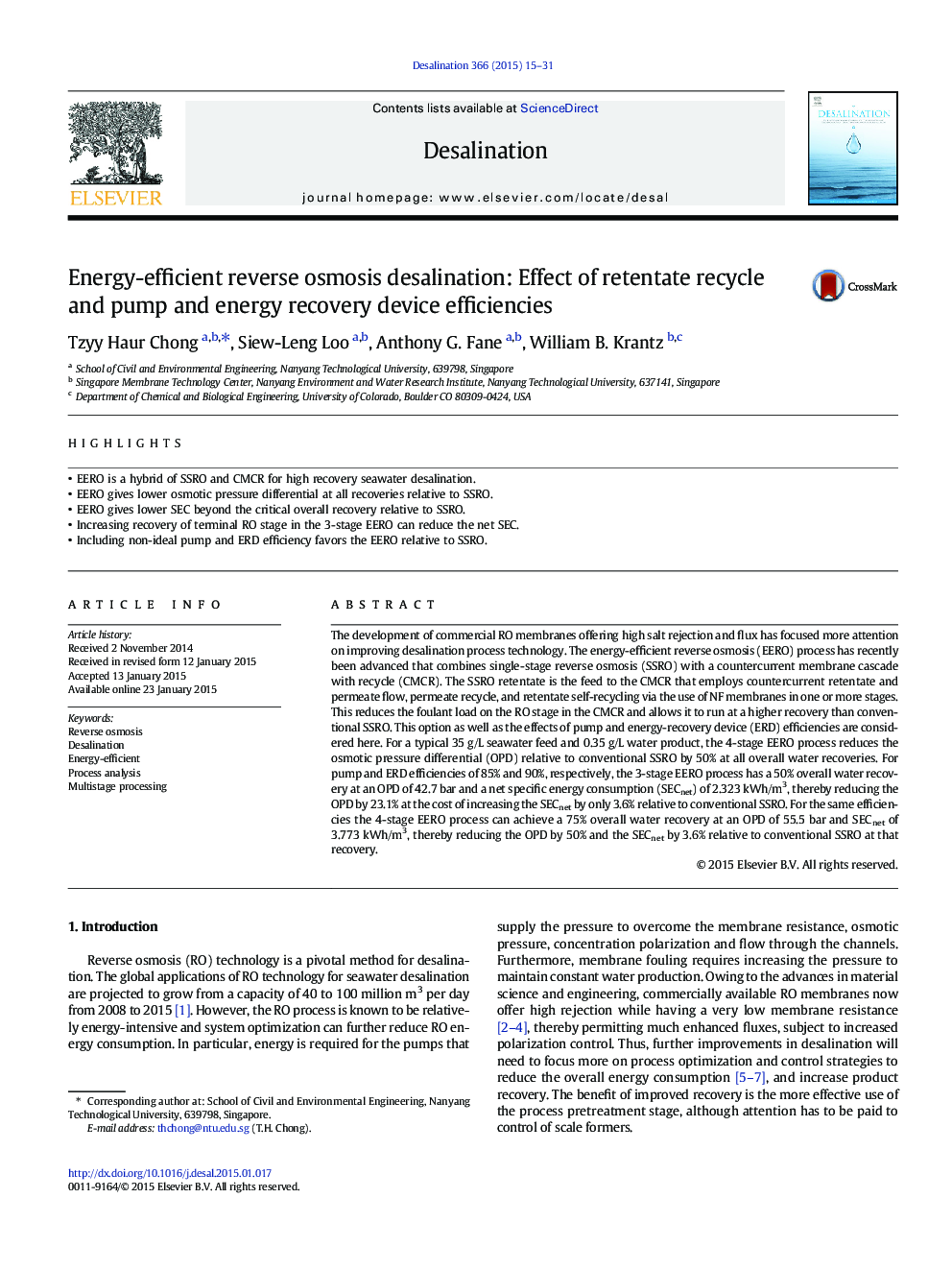| کد مقاله | کد نشریه | سال انتشار | مقاله انگلیسی | نسخه تمام متن |
|---|---|---|---|---|
| 623097 | 1455329 | 2015 | 17 صفحه PDF | دانلود رایگان |
• EERO is a hybrid of SSRO and CMCR for high recovery seawater desalination.
• EERO gives lower osmotic pressure differential at all recoveries relative to SSRO.
• EERO gives lower SEC beyond the critical overall recovery relative to SSRO.
• Increasing recovery of terminal RO stage in the 3-stage EERO can reduce the net SEC.
• Including non-ideal pump and ERD efficiency favors the EERO relative to SSRO.
The development of commercial RO membranes offering high salt rejection and flux has focused more attention on improving desalination process technology. The energy-efficient reverse osmosis (EERO) process has recently been advanced that combines single-stage reverse osmosis (SSRO) with a countercurrent membrane cascade with recycle (CMCR). The SSRO retentate is the feed to the CMCR that employs countercurrent retentate and permeate flow, permeate recycle, and retentate self-recycling via the use of NF membranes in one or more stages. This reduces the foulant load on the RO stage in the CMCR and allows it to run at a higher recovery than conventional SSRO. This option as well as the effects of pump and energy-recovery device (ERD) efficiencies are considered here. For a typical 35 g/L seawater feed and 0.35 g/L water product, the 4-stage EERO process reduces the osmotic pressure differential (OPD) relative to conventional SSRO by 50% at all overall water recoveries. For pump and ERD efficiencies of 85% and 90%, respectively, the 3-stage EERO process has a 50% overall water recovery at an OPD of 42.7 bar and a net specific energy consumption (SECnet) of 2.323 kWh/m3, thereby reducing the OPD by 23.1% at the cost of increasing the SECnet by only 3.6% relative to conventional SSRO. For the same efficiencies the 4-stage EERO process can achieve a 75% overall water recovery at an OPD of 55.5 bar and SECnet of 3.773 kWh/m3, thereby reducing the OPD by 50% and the SECnet by 3.6% relative to conventional SSRO at that recovery.
Journal: Desalination - Volume 366, 15 June 2015, Pages 15–31
